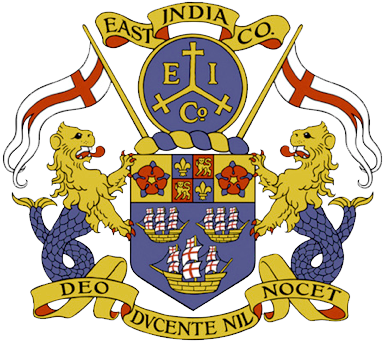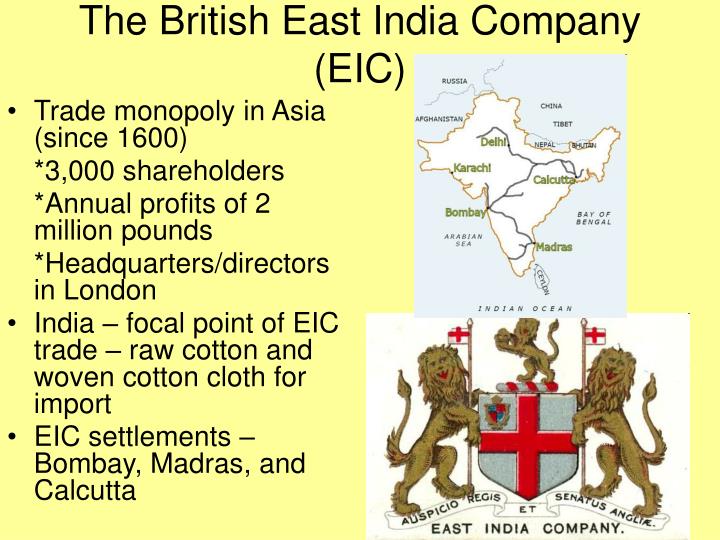British east india company shareholders
EAST INDIA COMPANY THE BRITISH , a trading company incorporated on 31 December for fifteen years with the primary purpose of exporting the staple production of English woolen cloths and importing the products of the East Indies.
While Portugal was politically united with Spain, from to , the company encountered opposition from Portuguese trading interests, which were already established on the Indian mainland, islands in the Indian Ocean, and particularly in the Persian Gulf area.
There the Portuguese controlled the small island Hormoz, off the southwest coast of Persia. Dutch merchants joined together in to form a powerful national United East India Company see DUTCH-PERSIAN RELATIONS on behalf of the States General and achieved early commercial success from their main base at Batavia on Java. Another international, commercial competitor on the Persian scene was the French Compagnie des Indes Orientales French East India Company , founded in The East India Company established its first base at the port of Surat in Gujarat in , but its factors soon realized that sale of cloth was disappointing and resolved to expand its market possibilities in Persia, where an indirect trade was already carried on by the British Levant Company, established on 11 September by its agents through Aleppo.
Inevitably, this trade caused friction between the companies, and some questioned whether it was worthwhile offending the Ottomans for a hypothetical advantage with the Persians, arguing that the overland routes from northern Persia to the eastern Mediterranean ports would not be diverted for economic or political reasons Roe, The Embassy to the Moghul , pp.
British East India Company - New World Encyclopedia
It was not an auspicious beginning, for the port was a paltry place and the reception unwelcoming, but Connock was optimistic. In the course of a year he laid the foundations of a trade and negotiated a treaty for exports of silk and imports of cloth on satisfactory terms, without recourse to a great outlay of ready money, and with the possibility of supplanting Portuguese trade there.
He resented the Portuguese occupation of Hormoz, against whom he had no shipping leverage to enable him to expel them. This cooperation appeared mutually advantageous, but neither side could fulfill its part of the bargain. Although he aspired to control Persian trade, which he did much to encourage and in which he greatly assisted Armenian enterprise, he did not completely succeed.
Armenian control increased, and Persian-Ottoman relations improved.

This proved a mixed blessing for the company. Apart from its general Asian trade, it sponsored three separately financed voyages to Persia with large deliveries of cloth and other English commodities in exchange for silk, for which demand was growing. The results were disappointing.
However, the constitutional troubles in England, competition from illegal interlopers, and the outbreak of the first Anglo-Dutch war made the mid-century period one of declining value for the company, although the area trade continued and the Dutch prospered.

These events were followed by the dominance of Sir Josiah Child in the councils of the company and by a more energetic direction of its activities in the face of growing rivalry at home. Correspondingly, the Dutch company was faltering in its competitiveness, and local merchants were becoming more active. Thus, to some extent, while Asian commerce was increasing, the volume traded by the two major European companies was proportionally declining, although the local freightage carried by their shipping rose, as did the personal participation of their factors in it Ferrier, , pp.
After a period of severe retrenchment in supplies, expenses, and staff in Persia, in the mids the company made efforts to improve the standing and trading of its Persian agency. Moderation, not force, was the policy. Nevertheless, the incentive to expand trade to Persia was powerful; Armenian interests were entrenched in the overland trade to Aleppo Chardin, IV, p. The factors were instructed to obtain Persian goods in exchange, even to purchase them and to provide a comprehensive freightage service to and from India to compete with Portuguese and Dutch vessels.
The Dutch company experienced the same adverse conditions, but took more forceful measures to assert itself.
How British came and occupied India (British Rule in India- History) 1600 to 1857 ADIn the last decade or so of the 17th century the objectives of the company in Persia remained the same, but the approach changed. Five particular Armenian merchants to whom another proposal was addressed were unwilling to jeopardize their existing interests for the sake of anticipated attractions.
Chaudhuri, The English East India Company.
The British East India Company — the Company that Owned a Nation (or Two)
The Study of an Early Joint-Stock Company, , London, Idem, The Trading World of Asia and the English East India Company, , Cambridge, Raychaudhuri and Irfan Habib, eds. Past and Present LXXXIX, July-December , pt. Lockhart, The Fall of the Safavid Dynasty and the Afghan Occupation of Persia , Cambridge, Scott, The Constitution and Finance of English, Scottish, and Irish Joint-Stock Companies to , Cambridge, Steensgaard, Carracks, Caravans and Companies. The Structural Crisis in the European-Asian Trade in the Early 17th Century , Copenhagen, The fall of the Safavid Dynasty in , the Afghan occupation, and subsequent anarchy naturally depressed trade throughout Persia.
There are garbled allusions to these events in the Persian chronicles: After the Indian mutiny in , for which the company was held partly to blame, it was liquidated and its assets transferred to the crown on 2 August They are preserved in the India Office Library in London, under the headings Persia and the Persian Gulf Records and Bombay Public Consultations or Proceedings ; in the National Archives of India at New Delhi; and in the Maharashtra State Archives, Bombay Basra and Gombroon factory diaries.
Particulars are to be found in Abdullah Thabit, Amin, and Perry. Abdullah Thabit, The Political Economy of Merchants and Trade in Basra, , unpubl.

Submitted tags will be reviewed by site administrator before it is posted online. If you enter several tags, separate with commas. Topic select a topic Archaeology Architecture Arts and Crafts Biographies Central Asia Caucasus Education Ethnic Groups Flora and Fauna Folklore Foreign Relations Geography History, Pre-Islamic History, Medieval History, Safavid History, Qajar History, Modern Indian Subcontinent Journalism Linguistics Literature, Pre-Islamic Literature, Pre-Modern Literature, Modern Material Culture Music Religion-Pre-Islam Religion-Islam Religion-Other Sciences Social Sciences Afghanistan.
EAST INDIA COMPANY BRITISH.
A Brief History of the English East India Company – | Qatar Digital Library
The Afsharid, Zand, and Qajar periods. See also GREAT BRITAIN. Amin, British Interests in the Persian Gulf , Leiden, Sir Thomas Roe, The Embassy to the Moghul , ed.
Sir William Foster, London, Wilson, The Persian Gulf , London, Wood, A History of the Levant Company , Oxford, Perry, Karim Khan Zand. A History of Iran , Chicago, EAST INDIA COMPANY BRITISH 0 COMMENTS ADD COMMENT.
TAGS East Indies EIC great britain indian ocean Persian Gulf trade trading voyages. Privacy Policy Add Comment.